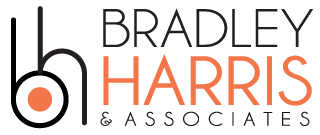Face-to-face Interview Skills Series
Intimacy may be an issue for many people, but when it comes to face-to-face interviewing, you must put any insecurities aside and demonstrate your confidence. Making eye contact is critical during these initial interactions with potential employers. In fact, according to Psychology Today, eye contact is the strongest form of non-verbal communication.
Build rapport and establish trust with eye contact
Eye contact is essential for building rapport and establishing trust with the people you’re conversing with, whether it’s a hiring manager, future manager, potential client or customer, or resident’s family. It’s a form of non-verbal communication that comes along with a variety of undertones and perceptions.
Think about the last time you spoke to someone who avoided looking you in the eyes during the conversation. How did it make you feel? You might have felt like the person wasn’t interested in the conversation or that she was being dishonest – not exactly misconceptions you want to create in the mind of your next boss.
Hiring managers look for eye contact as a sign of confidence and strong communication skills. After all, communication is more than just words; it’s a combination of words, your tone, and non-verbal cues like facial expression, posture, and eye contact.
Eye contact may be essential to the job
While eye contact in a face-to-face interview is important regardless of the position you’re interviewing for, it’s even more so if you’re interviewing for a sales, marketing, or management position. If a candidate lacks the confidence to make eye contact in the interview setting, hiring managers may wonder how you’ll be an effective leader or how you’ll be able to interface with potential referral sources.
The flip side of this coin is being overzealous with eye contact. If your stare is too intense or you don’t blink for a full ten minutes, it might come off as a sign of aggression. Eye contact can also carry romantic connotations, so staring too intently for too long may come across as inappropriate. These aren’t the impressions you want to leave on your future employer, either.
Finding balance and working with non-verbal cues
Ultimately, finding the right balance is key. Look interviewers in the eye during introductions, and smile while you shake their hands. Genuine smiles are often visible in the eyes, as well. Be authentic and confident without being overbearing. It’s perfectly acceptable to look away while you think of a response to a question, for instance, but do look the interviewer in the eyes when you deliver your response.
If you are shy and have difficulty maintaining eye contact, tell the interviewer that shyness is a characteristic that you’re working on improving, but then demonstrate that you’re an exceptionally competent professional capable of handling the duties of the position.
You’ll also find that eye contact provides you with invaluable feedback during the interviewing process. It’s natural to pause every so often while you’re providing answers or giving background on yourself, for instance, and making eye contact during these moments can tell you whether the interviewer is following what you’re explaining or reveal any confusion. Being able to read these non-verbal cues is equally as important as delivery.
Prepare for your next interview by practicing eye contact techniques with your friends. The more comfortable you are, the more authentic and confident you’ll appear.




